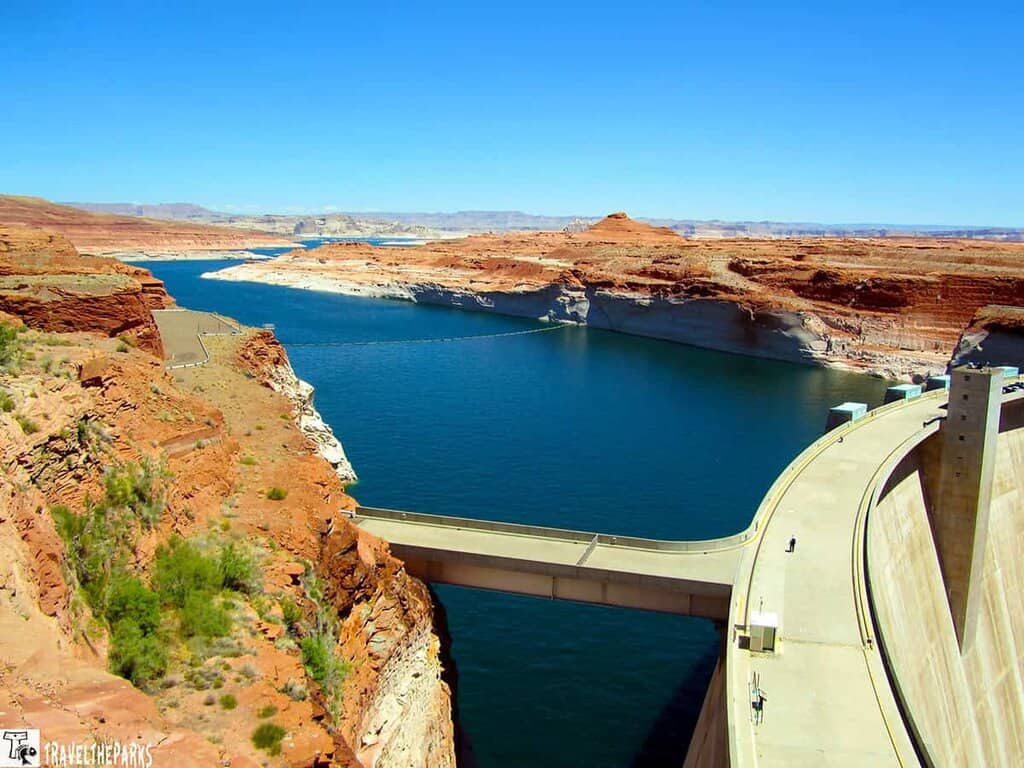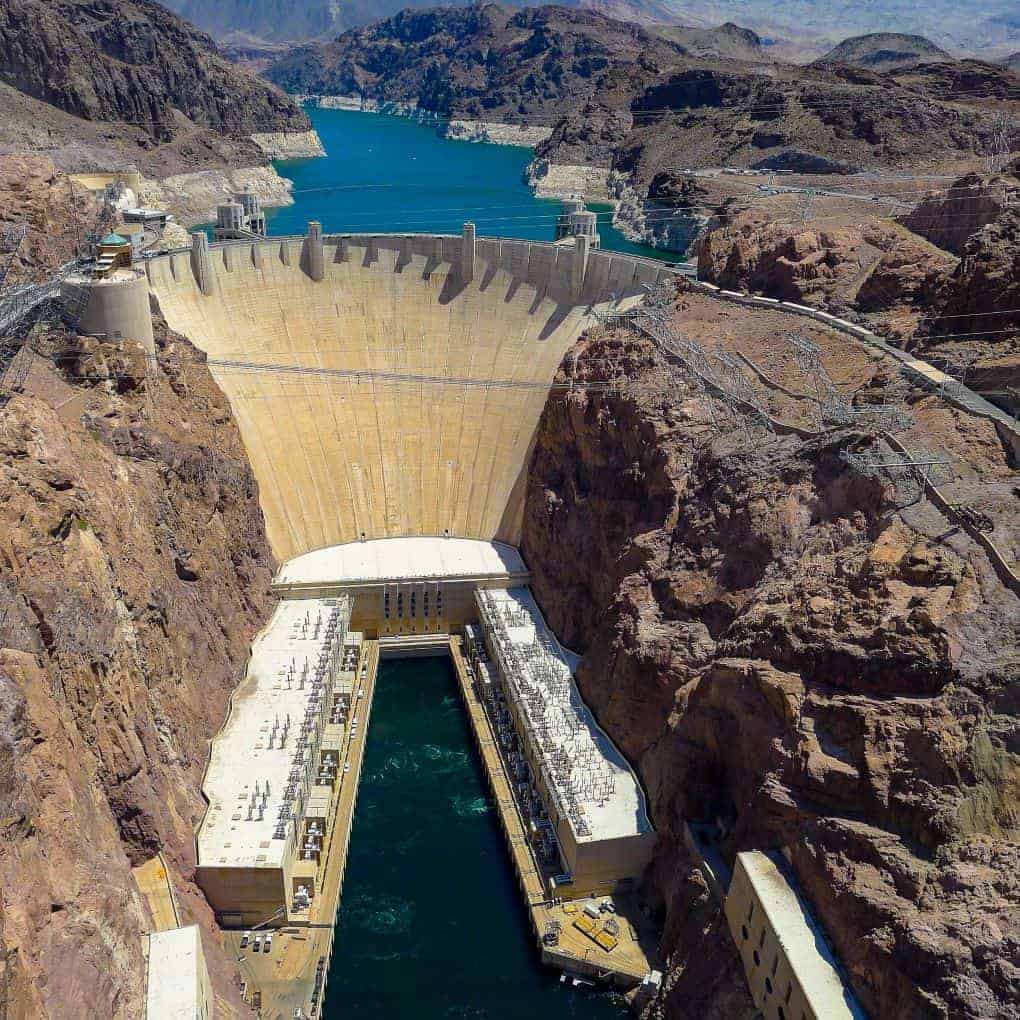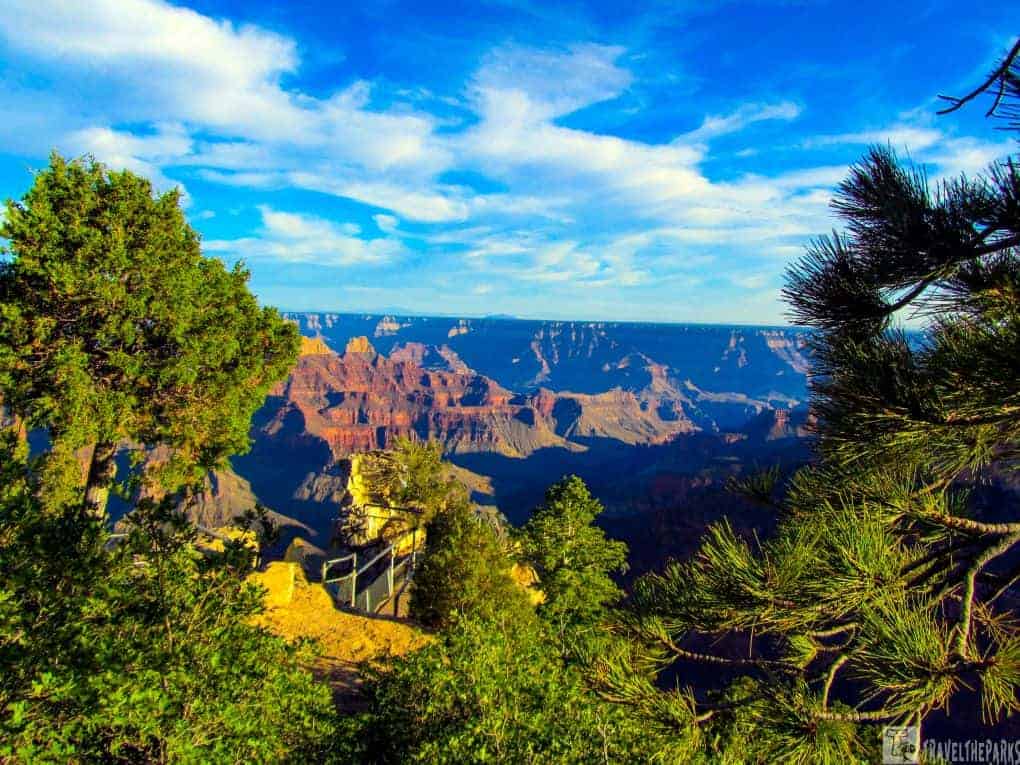Located in the center of Page, Arizona, Lake Powell is a wonderful place for people who love nature and enjoy adventure. Visiting Glen Canyon National Recreation Area as part of the next leg of our Grand Circle Tour gave us the chance to explore its stunning landscapes and countless outdoor activities. This sizeable area includes a lot of Lake Powell’s shoreline and offers great opportunities for memorable outdoor adventures.
While we were there, we visited many of Page’s most famous attractions. There are plenty of things to do in Page, Arizona, which is one of the most photographed places in the Southwest. No matter if we’re traveling to another state or just exploring nearby areas, we always take the time to enjoy the trip—especially when it takes us to amazing places like Page, Arizona.
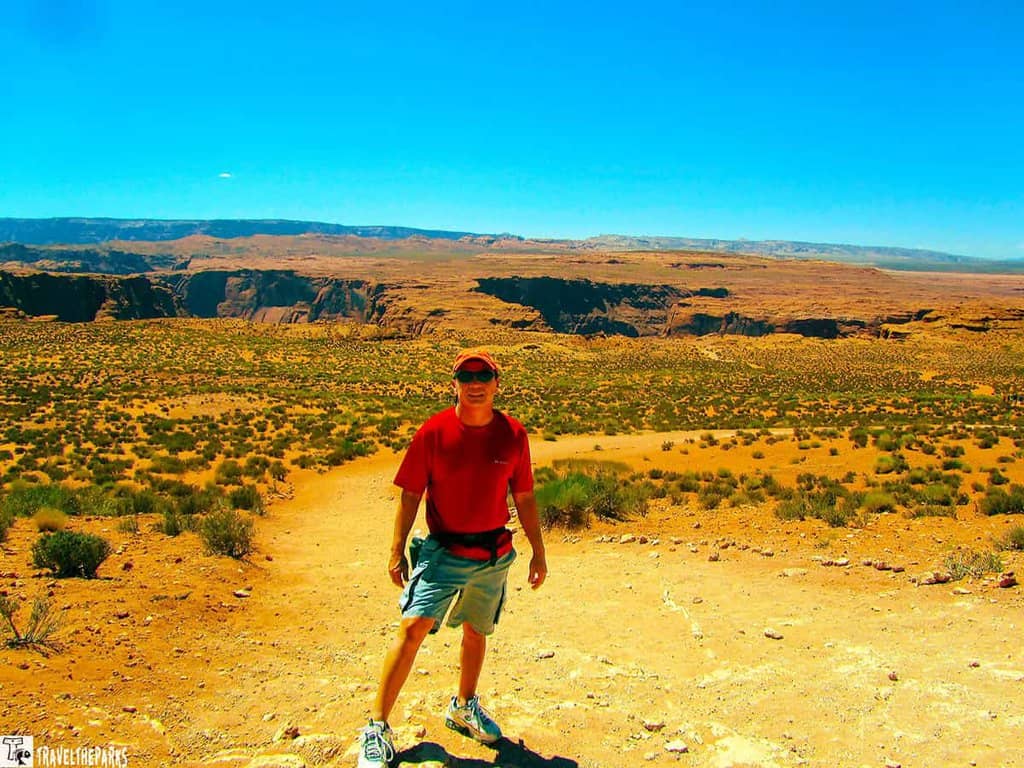
This post may contain affiliate links, meaning if you purchase something through one of these links, we may earn a small commission at no extra cost to you! Read the full disclosure policy here.

Table of Contents
How to Get There: Visiting Glen Canyon National Recreation Area and Lake Powell
Reaching Glen Canyon National Recreation Area and Lake Powell is relatively easy, especially if you’re traveling as part of a larger Southwest road trip like the Grand Circle Tour. The hub for most visitors is Page, Arizona, a small town with big scenery and all the essentials for exploring this region.
- RV Travelers: Glen Canyon is a popular stop for RVers, with several well-equipped campgrounds near Lake Powell and in the surrounding area. Wahweap RV & Campground, located right on the lake, is a convenient base for exploration.
- By Car: Page is accessible via U.S. Route 89, which connects travelers coming from Flagstaff, AZ (about 2.5 hours south) or Kanab, UT (just over 1 hour west). We were coming from the North Rim of Grand Canyon National Park via Kanab. The drive itself is a scenic experience, with desert vistas, colorful canyons, and sweeping plateaus.
- By Air: The closest major airport is Flagstaff Pulliam Airport (FLG), but for more flight options, consider Phoenix Sky Harbor (PHX) or Las Vegas McCarran (LAS)—both about 4–5 hours away by car. Page does have a small airport with limited regional flights.
PRO Tip: Be sure and adjust your time if you are just entering Arizona as they are on Mountain Standard Time.
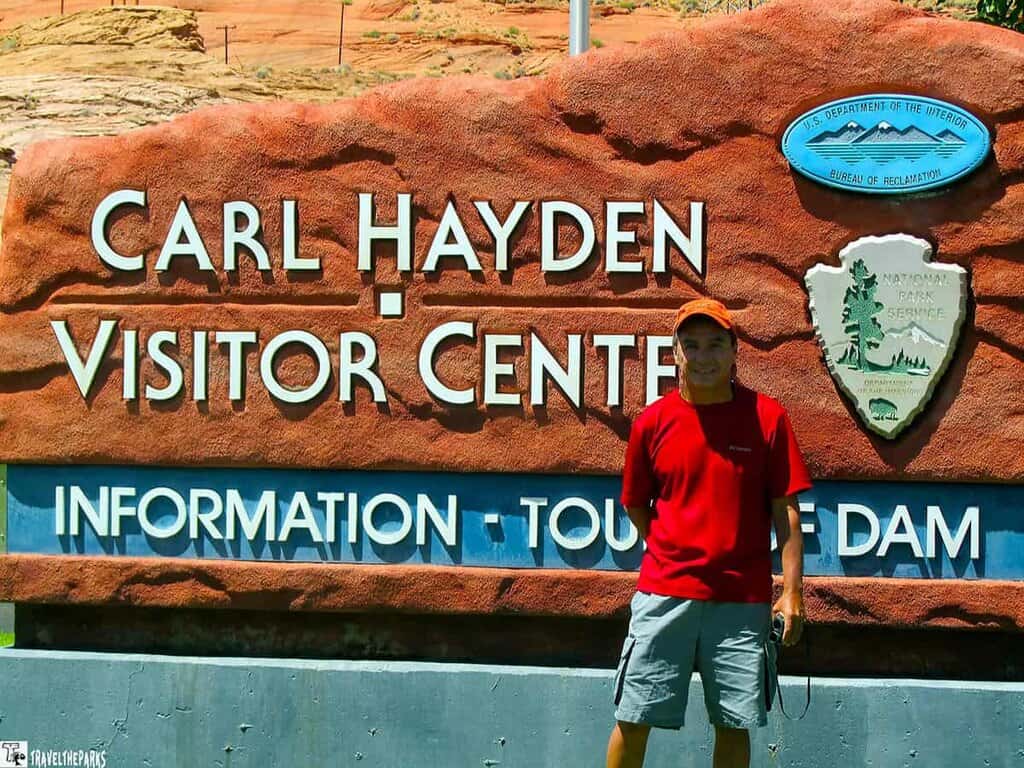
Things to Do in Glen Canyon National Recreation Area: Stop by the Carl Hayden Visitor Center
The Carl Hayden Visitor Center is the perfect first stop when you arrive in Page, Arizona. Next to Glen Canyon Dam, this center is a great resource for learning about the dam, the surrounding geology, and recreation at Lake Powell. It’s also a great place to cool off—thanks to the air conditioning! It offers a comfortable break from the Arizona heat, especially for those traveling with kids or anyone needing a quick rest.
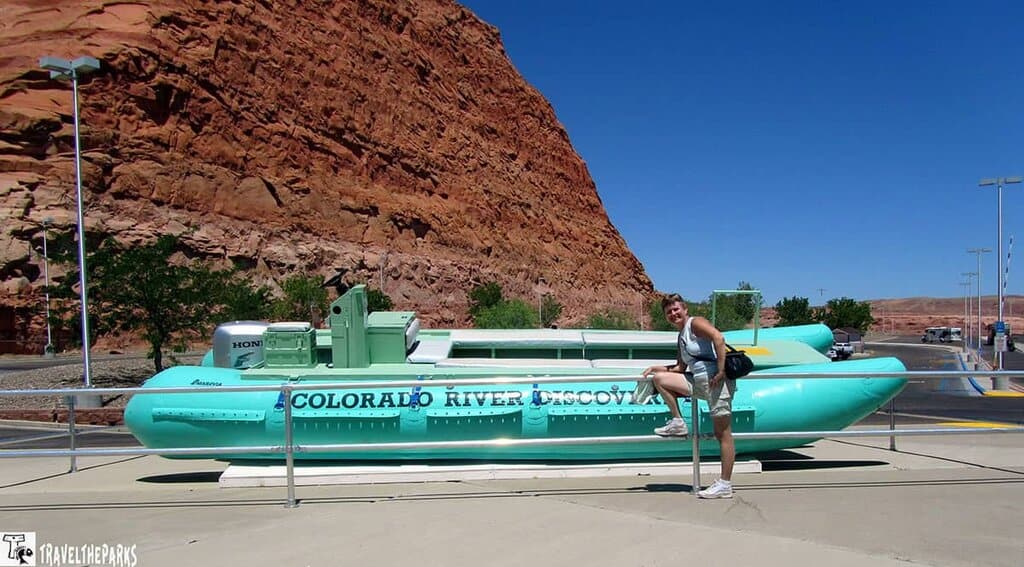
The visitor center is large and welcoming. Outside, there’s a shaded lawn—perfect for a picnic lunch. Interpretive displays inside tell the story of Lake Powell and the dam’s creation. One highlight is a large 3-D map that explains the Colorado River Basin Water Management System.
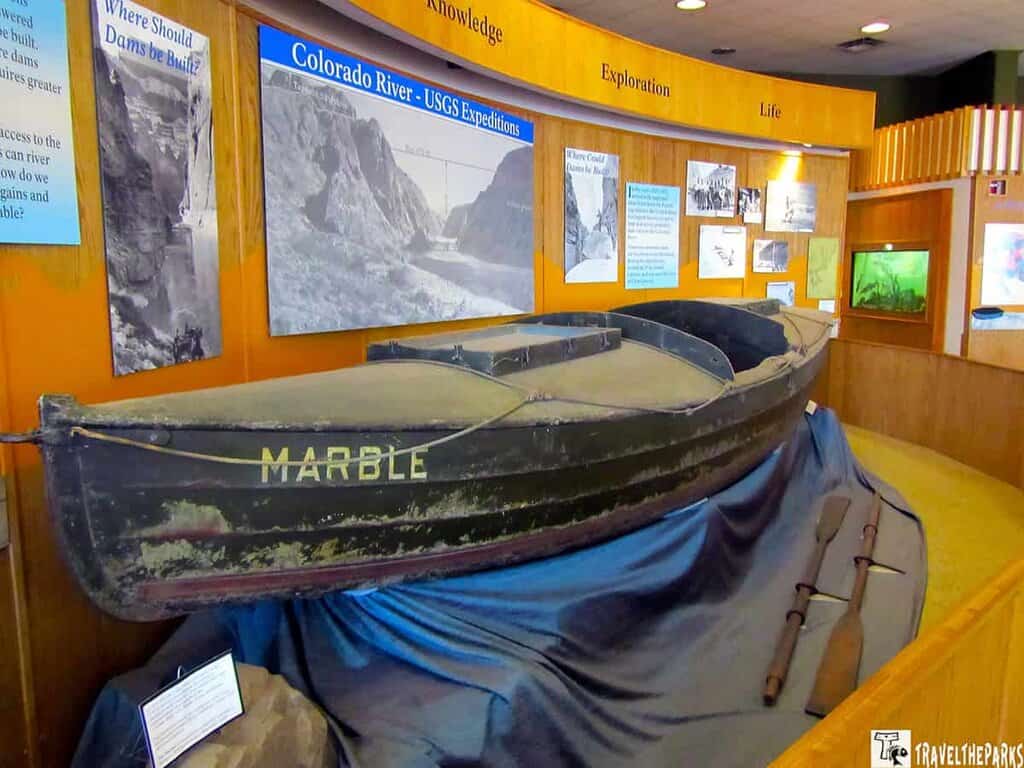
Explore the History: Exhibits at the Carl Hayden Visitor Center
The visitor center offers three free movies about the dam. We watched Standing Tall, which gives a detailed look at how the dam was built, and Desert Oasis, which explores the natural life around Glen Canyon. The center also has clean restrooms and a bookstore stocked with guidebooks and historical information on Glen Canyon and Lake Powell.
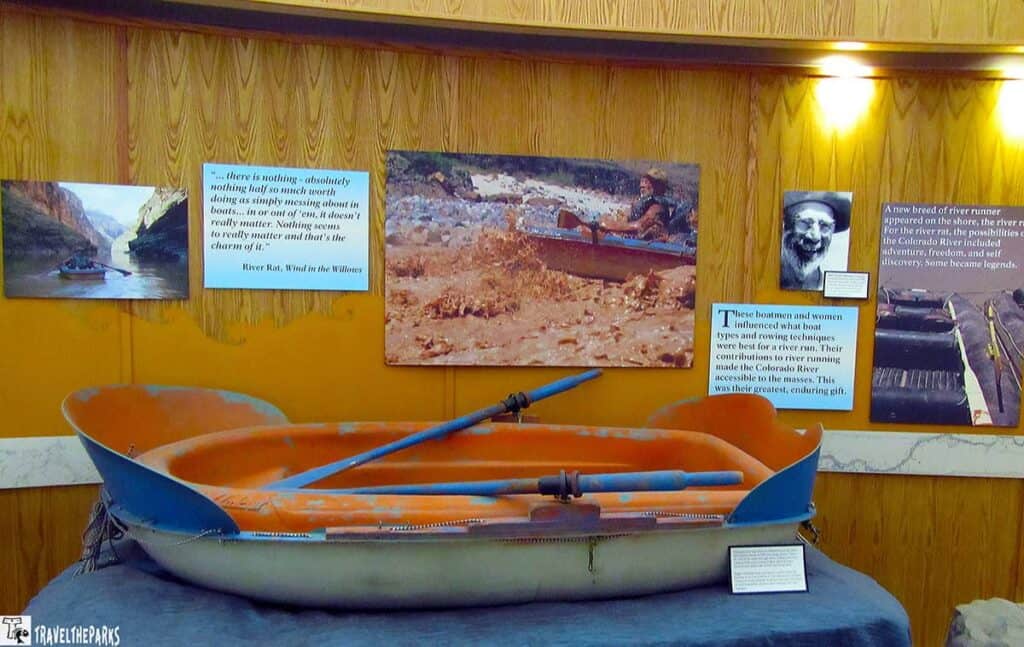
The gift shop is large and filled with all things Southwestern—perfect for souvenirs. One of the highlights is the glass-enclosed horseshoe walkway perched above the dam. From there, you’ll get stunning panoramic views of Lake Powell, the Colorado River, and the Glen Canyon Dam itself.
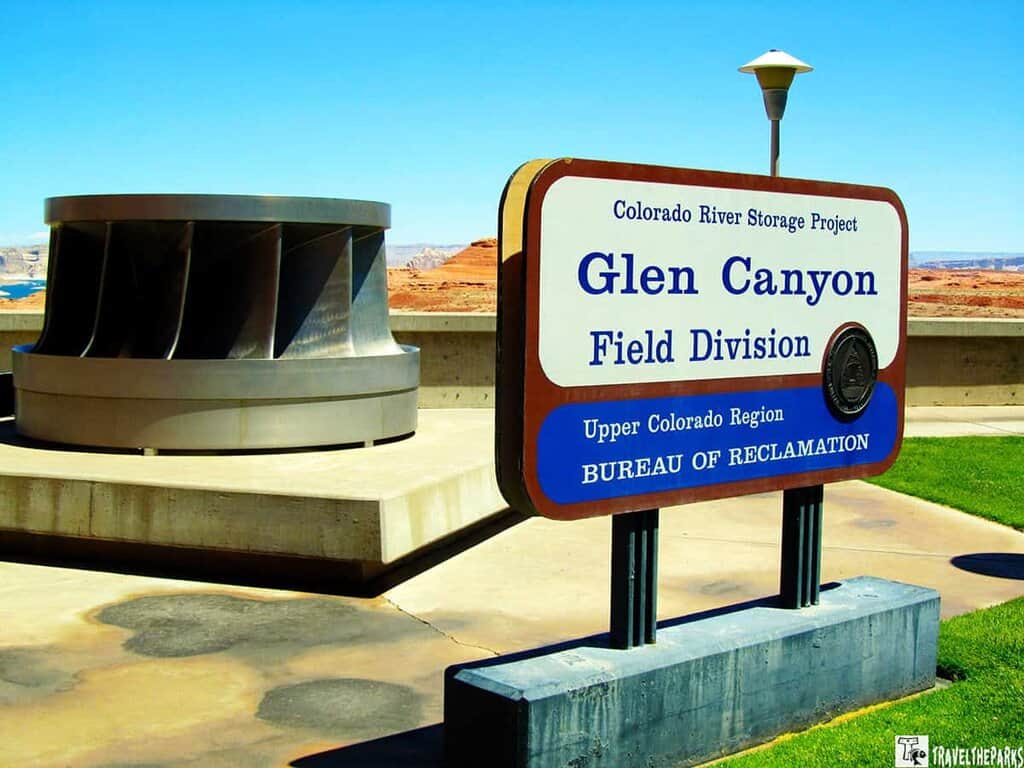
One of the most fascinating exhibits features dinosaur footprints. These prints were left in the sediment of an ancient coastal environment, now within the Glen Canyon National Recreation Area. Nearby, an informative display explains the tracks in detail. It also shares insights about the dinosaurs that made them and the geological forces that preserved these footprints through time.
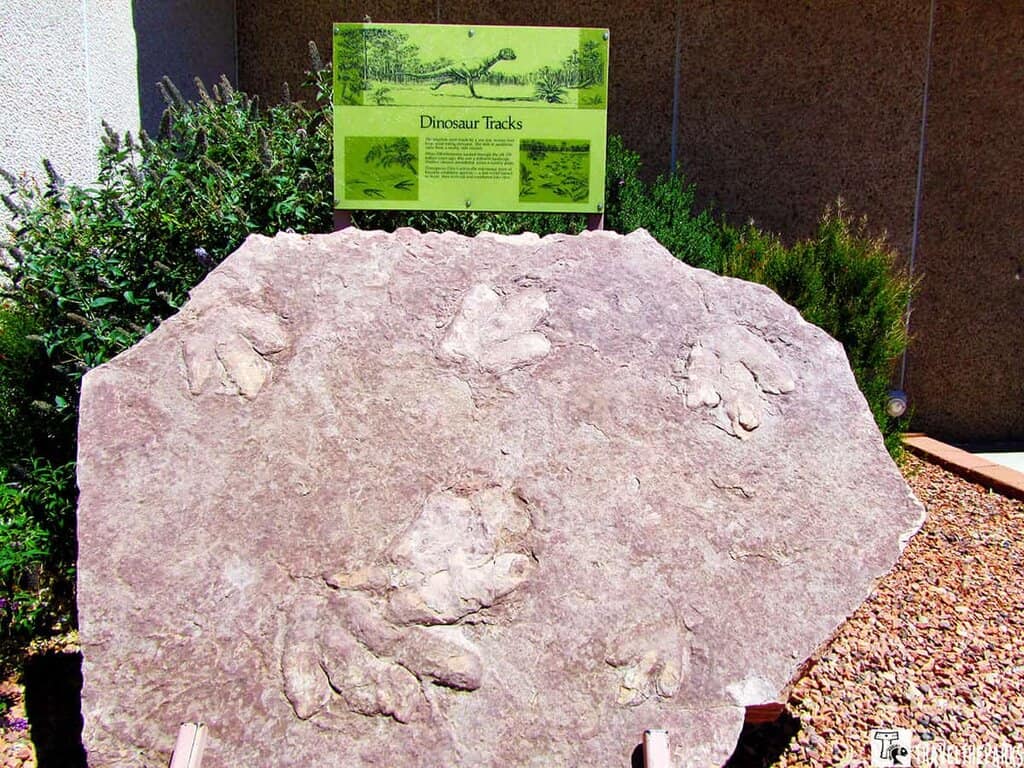
Crossing History and Beauty: Walking the Glen Canyon Bridge
Be sure to walk across the Glen Canyon Bridge to view and photograph the dam from a fresh perspective. The idea of constructing a bridge across Glen Canyon was born out of the necessity to provide a crucial transportation link between the northern and southern regions of Arizona. We walked out onto the bridge that stretched between the red Navajo sandstone walls and stopped in the middle, staring down into what I could only describe “hair-raising”. The bridge’s graceful arch design not only allowed for spanning the vast gap but also minimized the impact on the surrounding environment. There are multiple openings in the fenced bridge that one can take photos without the fence interfering. The story of the Glen Canyon Bridge’s construction is one of grit, vision, and the unwavering pursuit of progress.
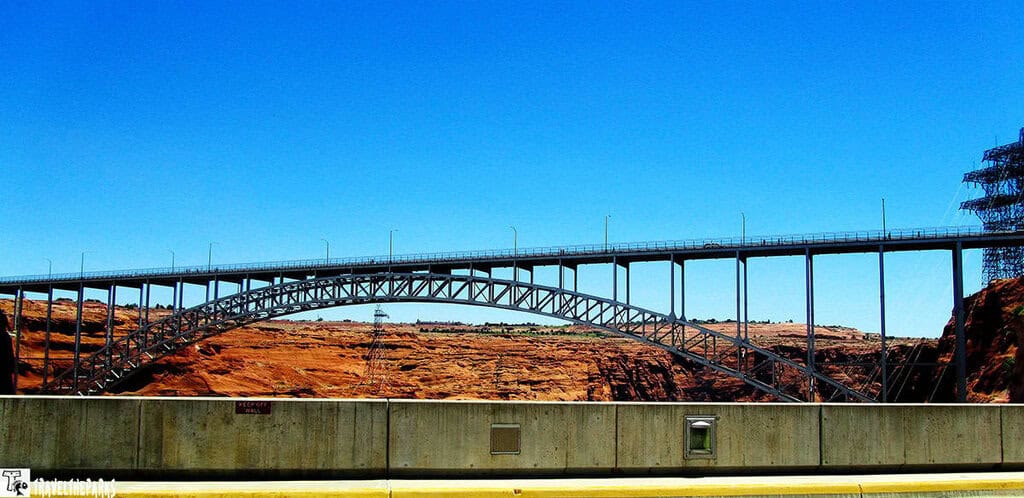
Glen Canyon Dam: The Engineering Wonder Behind Lake Powell
The Glen Canyon Natural History Association offers 45-minute tours of the dam. The dam was built between 1956 and 1964 and dedicated in 1966. My husband and I loved the visitor center, so we booked the tour. It was a fascinating look at one of the world’s greatest engineering feats. The tour costs $5 per person and takes about an hour.
IMPORTANT NOTE: Since our visit, there are currently no public tours of the dam.
Unlocking Glen Canyon: Embarking on the Ultimate Dam Tour
The dam is federally owned, so you must go through a metal detector before the tour. Bags and purses are not allowed. Glen Canyon Dam is a concrete arch dam on the Colorado River in northern Arizona. A guide explains the rules and then leads you to an elevator that goes down 11 floors. Afterward, you walk along the top of the dam, where you can see the turbines and look down at a neatly kept lawn that resembles a small golf course. Next, a second elevator takes you 528 feet deep inside the dam. The temperature drops to about 50 degrees—a welcome break from the desert heat.
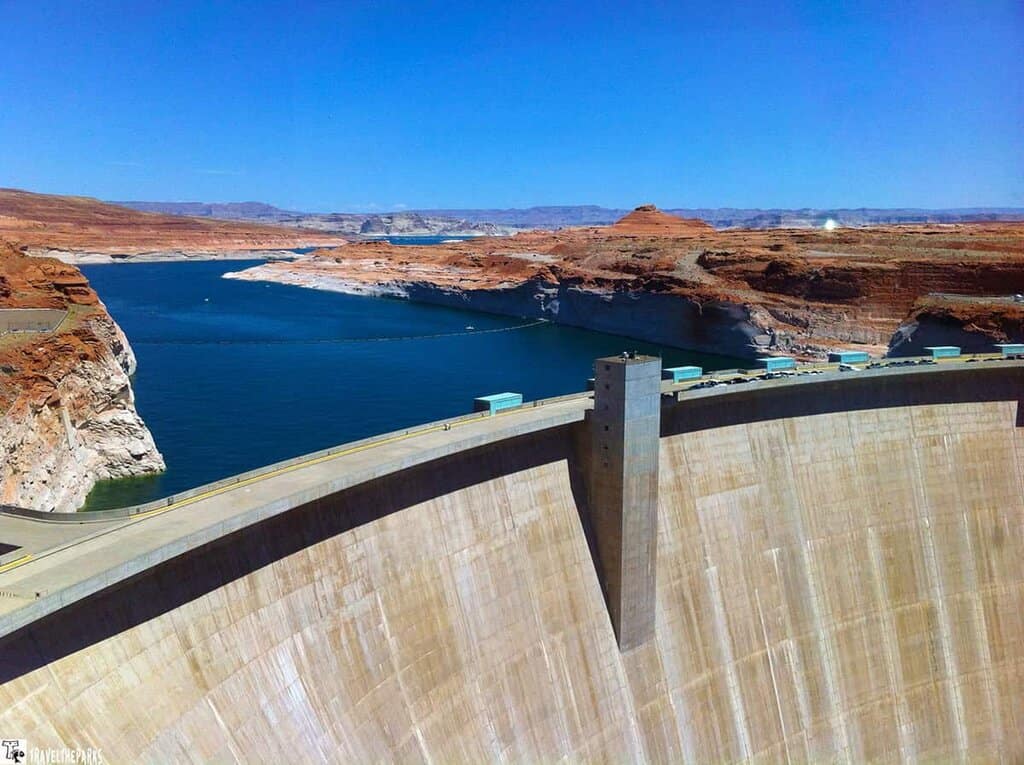
Next, you pass through the dam into the power generation building. Here, a visitor gallery offers views of the turbines in action. Our Native American guide, raised in the area, was very knowledgeable about the dam’s history and operation. His commentary covered everything—from construction and spillways to cavitation, discharge outlets, lake levels, turbines, hydroelectric power, and the bridge. Throughout the tour, he shared fascinating stories that gave insight into the dam’s environmental impact on the region.

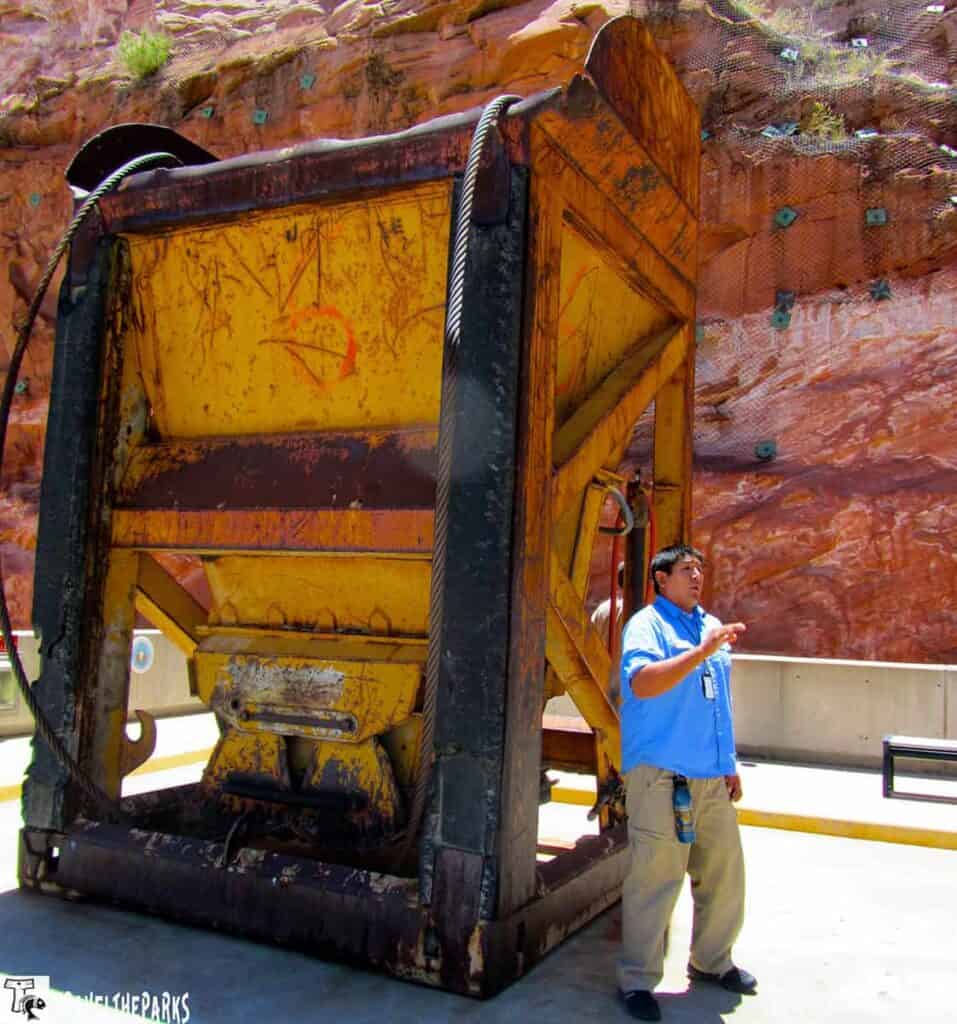
Engineering Marvel: How Glen Canyon Dam Powers the Southwest
They built the dam from 1957 to 1966 to provide hydroelectric power and regulate water flow from the upper Colorado River Basin to the lower basin states. The power plant at the base of the dam has eight turbines driving four 118,750-kilowatt and four 136,562-kilowatt generators. Together, they deliver a total generating capacity of 1,021,248 kilowatts. Water flows through eight penstocks that narrow from 15 to 14 feet in diameter as they reach the turbines. I highly recommend the tour — it was fantastic!
A Guide to Visiting Horseshoe Bend: Nature’s Spectacular Geological Showcase
On the Colorado River, in an entrenched meander, just below the Glen Canyon Dam, close to the town of Page. Horseshoe Bend is an intimate Grand Canyon experience (although technically in Glen Canyon). The trailhead for this 3/4 mile hike is located just a few miles outside of Page. It overlooks one of the most spectacular views on the Colorado River, 4 miles south of the Glen Canyon Dam, and 7-miles north of mile zero of the Grand Canyon.
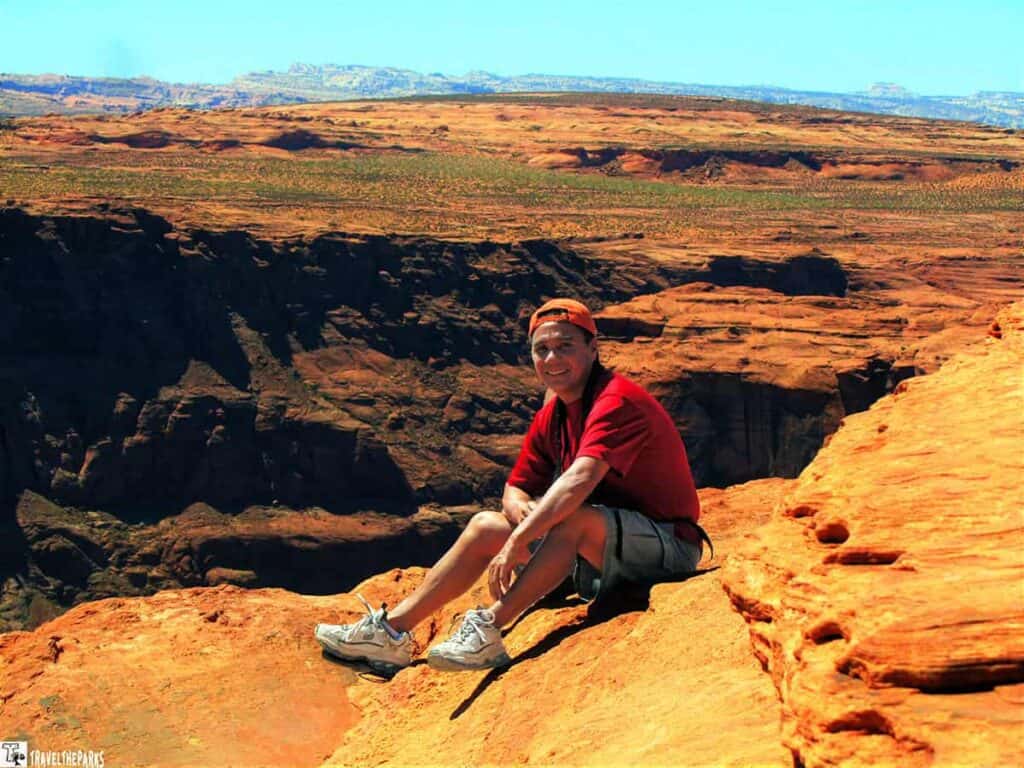
There is an information board at the top of the hill warning visitors of the danger of sitting on the edge of the sandstone cliff. A quality trekking stick would be advisable on this trail. Although this is a short walk, less than a mile in 107-degree heat, it was exhausting. The sand trail conserves and radiates the heat, which makes the ground level even hotter than the actual temperature outside-the soft sand makes it difficult to walk.Bring lots and lots of water! They don’t have a place to buy water on the short trail, and in the Arizona sun on a hot day, you will need water!
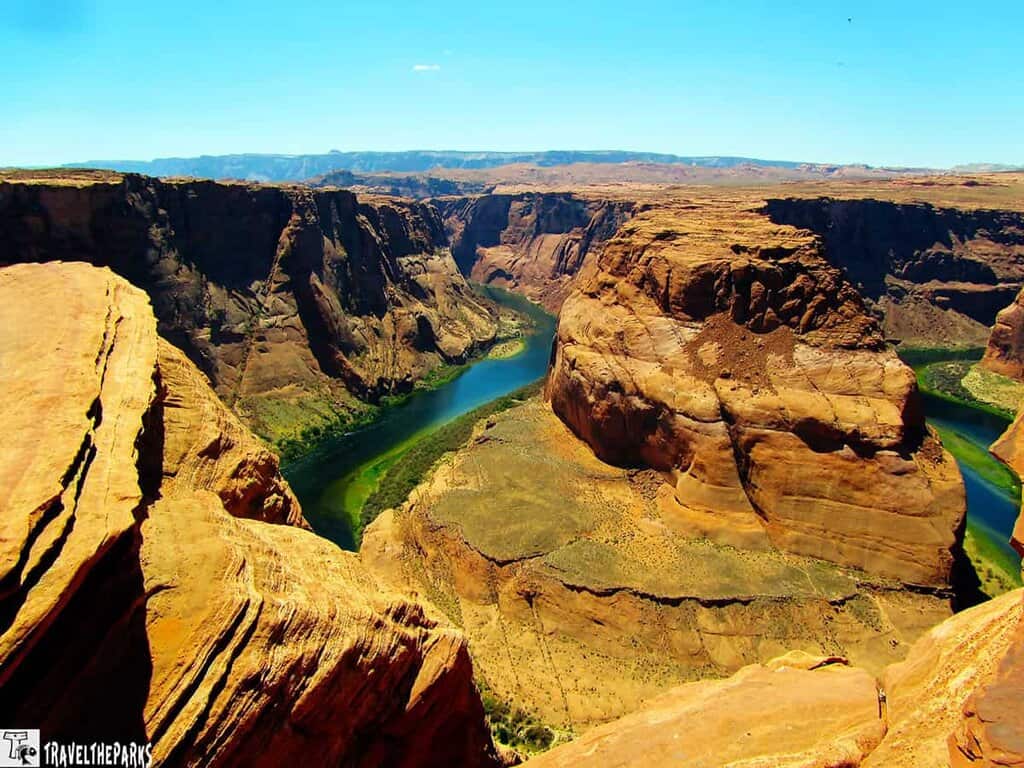
There are no guardrails. We stood right on the edge of the canyon wall. It was truly terrifying for me as I dislike heights. We saw lots of people taking risks to get that perfect selfie. If you have a fear of heights, like I do, it can be daunting. However, the views were breathtaking.
PRO Tip: Since our visit, there is now a $10 parking fee, and they have paved the trail all the way to the canyon overlook.
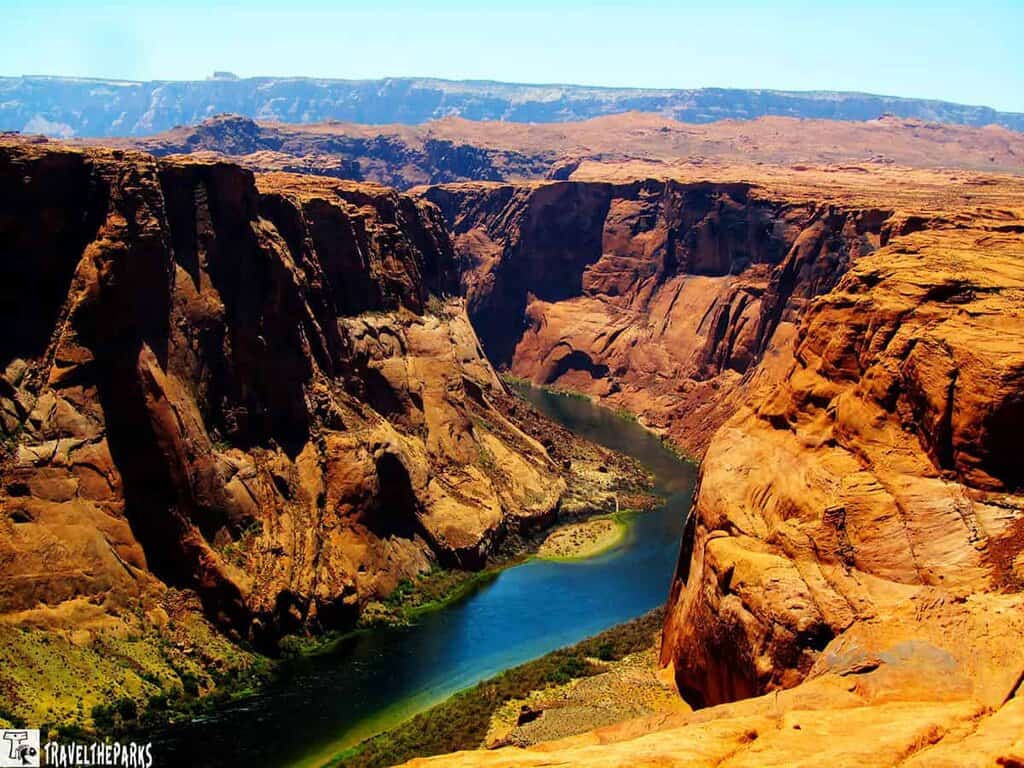
Journey Through the Sandstone: Our Tour of Antelope
One of the highlights of our stay in Page was going to see Antelope Canyon. We did a guided tour of Lower Antelope Canyon, and it took our breath away. Walking down into the narrow slot canyon, with light filtering through carved sandstone, created a mesmerizing dance of shadow and color. We loved strolling through a natural cathedral carved by wind and time.
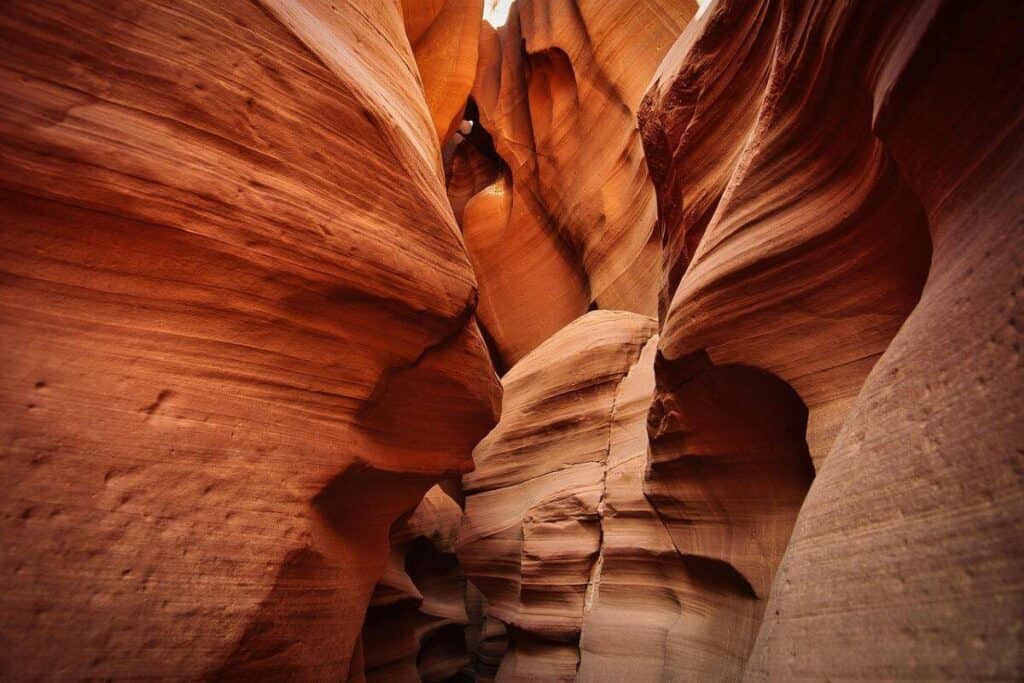
Our Navajo guide was eager to share with us the cultural significance of the canyon. He named known formations, helped guide us in photographing the best scenes, and shared anecdotes that gave meaning to the experience. The revolving tunnels and flowing curves of the canyon walls created a new photo opportunity. The canyon creates moments of awe with every step.
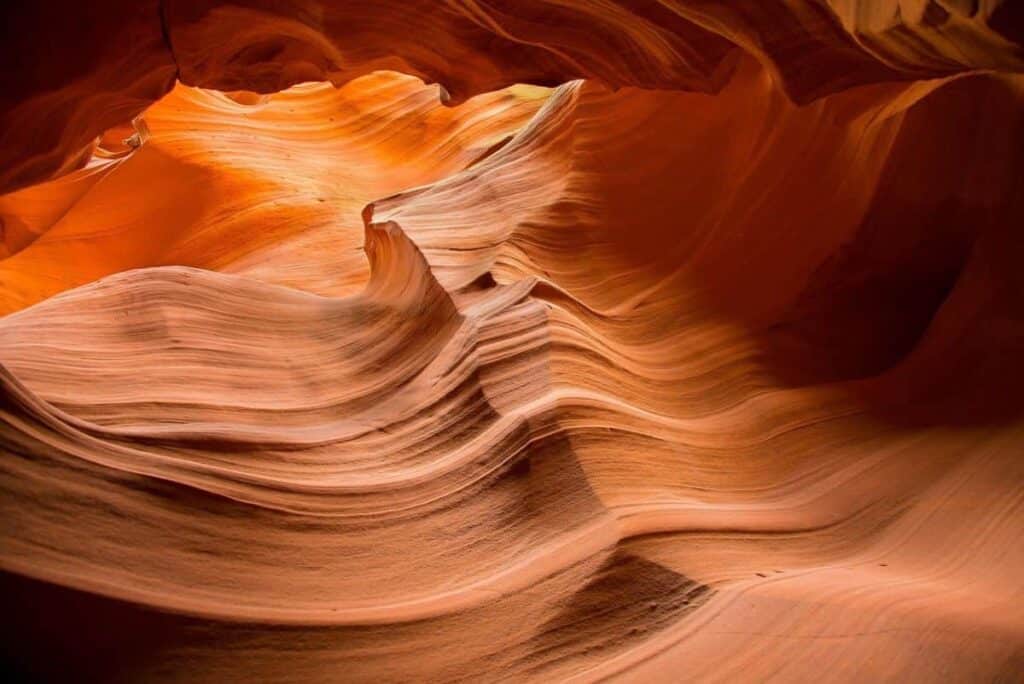
If you’re going while visiting Glen Canyon National Recreation Area, plan ahead. These tours fill up quickly, especially in high season. Antelope Canyon is sure to impress. We will forever cherish this personal experience.
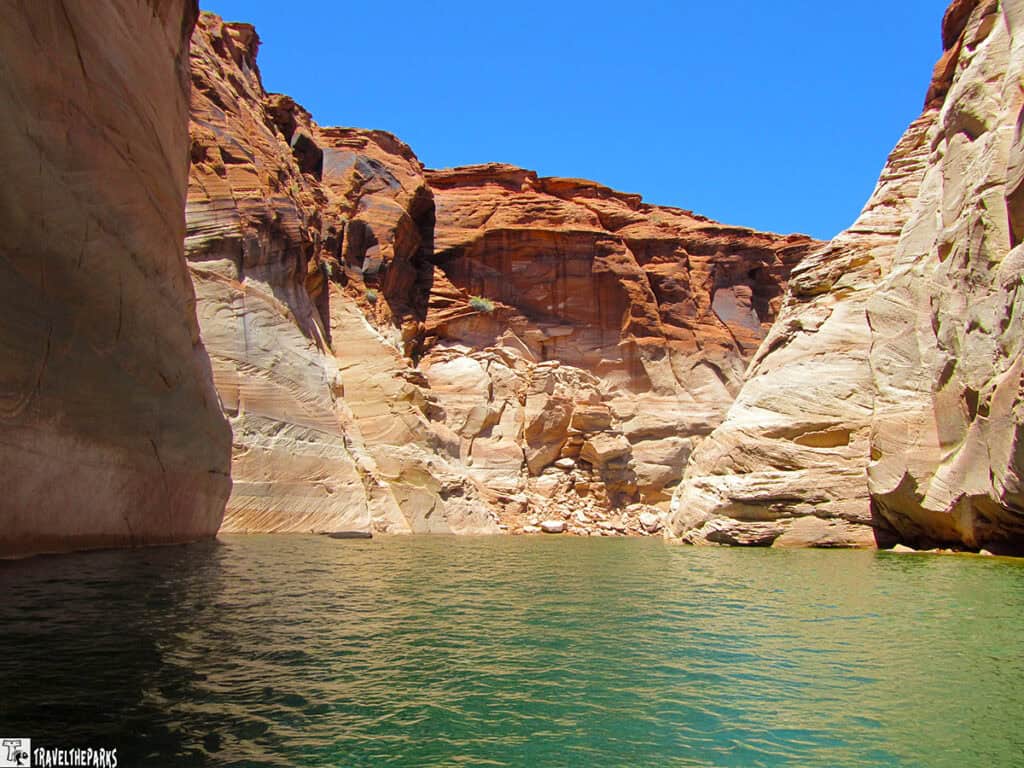
A Scenic Adventure to Rainbow Bridge–One of Lake Powell’s Hidden Gems
If you’re exploring Page and have time for a side adventure, we highly recommend taking a trip out to Rainbow Bridge National Monument with Lake Powell Resorts & Marinas. Not only is it one of the largest bridges in the world—it’s also one of the most inspiring places we’ve ever visited on our travels.
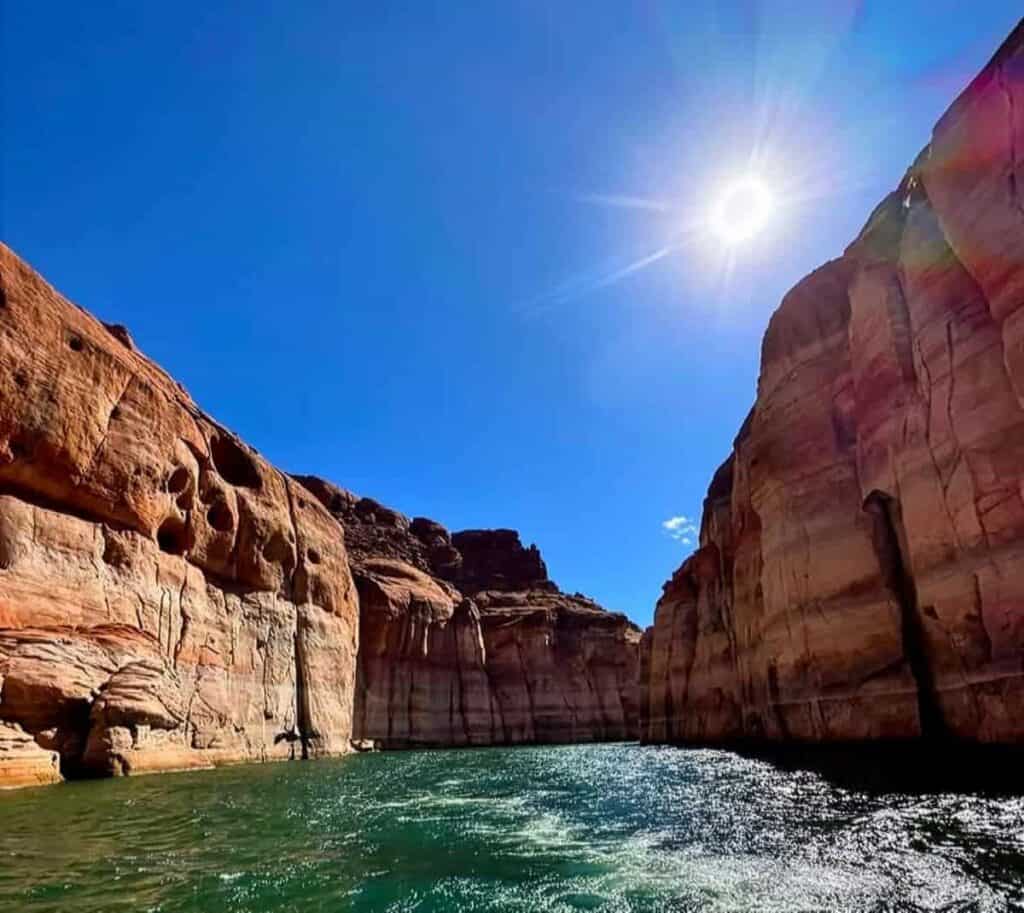
We did a boat tour starting from Wahweap Marina, which is 7 hours round-trip. This tour gave us a spectacular ride along the blue waters of Lake Powell. Marvelous canyons and striking rock formations are all around. The boat tour itself was well worth it, but the real magic begins when you get there. We had to hike 1.2-miles to the bridge. As you take the last curve and see Rainbow Bridge rising high and stately above the red rock backdrop, awe is an inevitable reaction.
Our guide spoke of the cultural significance of the bridge to the Navajo. We also learned that it has been a site of respect for generations. It’s a fairly easy hike and an excellent opportunity to stretch your legs after sitting in a boat for 3 hours. During the ride, you get to view some pretty spectacular scenery.
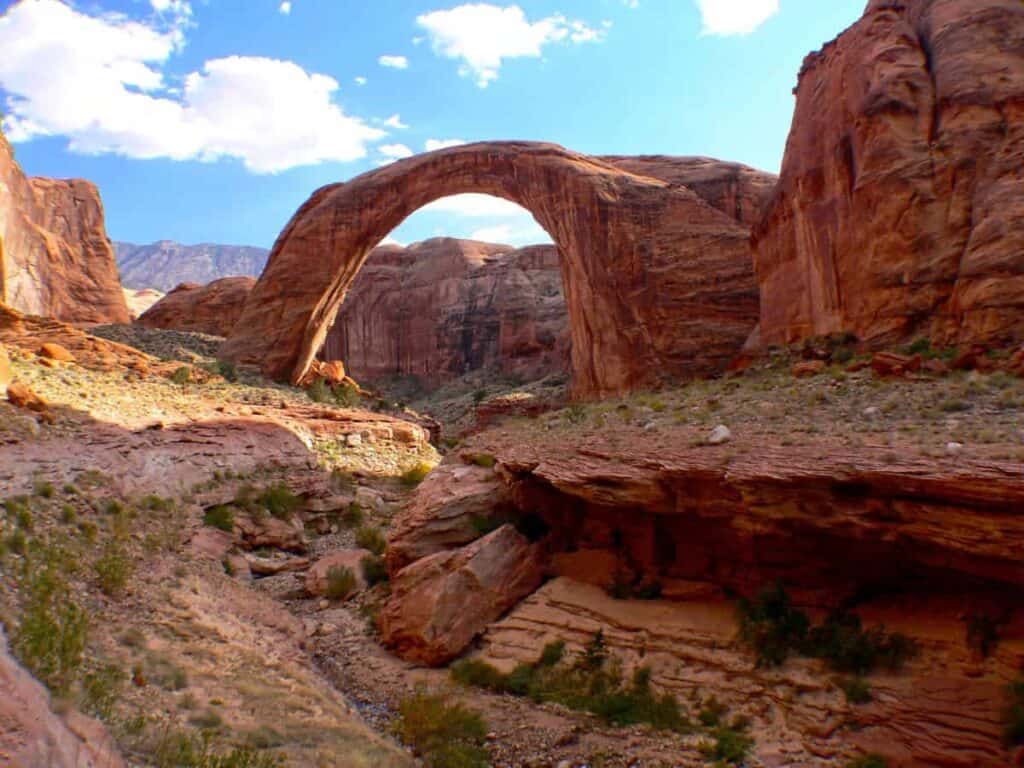
Easy Adventure: Float Trips from Glen Canyon National Recreation Area
If you’re not quite up for whitewater thrills but still want to experience the Colorado River from a whole new angle, then a float trip from Glen Canyon National Recreation Area is the perfect option! I think this is a must-do for anyone visiting Glen Canyon NRA.
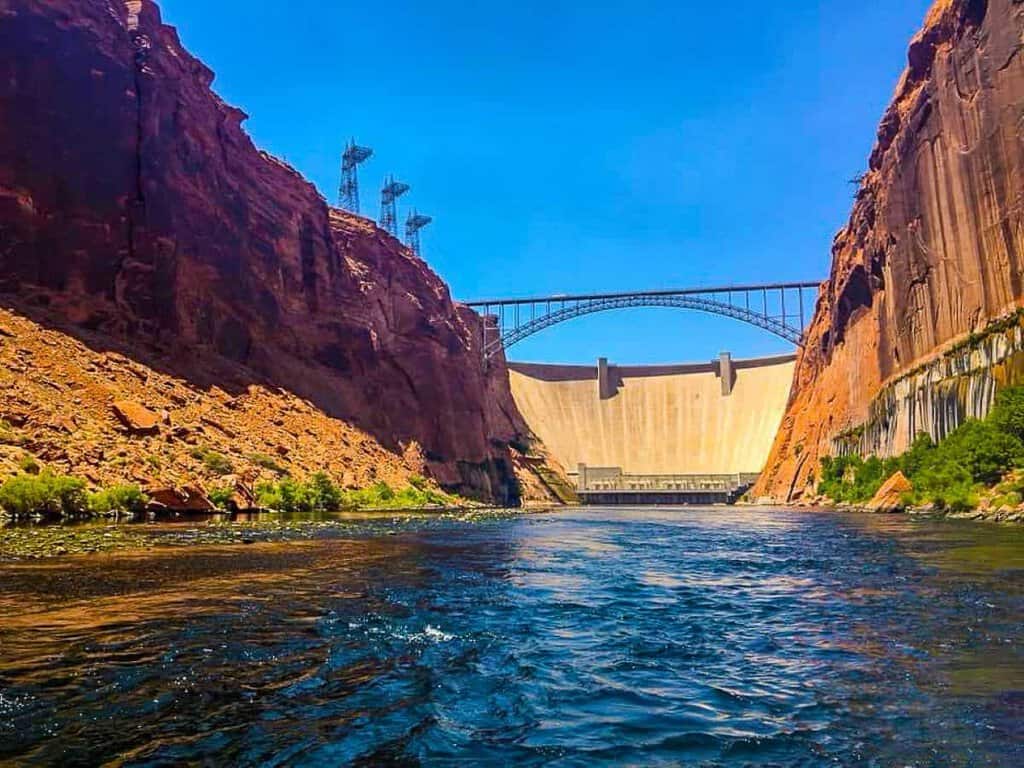
These guided smooth-water rafting trips typically begin just below the Glen Canyon Dam. They follow the Colorado River downstream through the awe-inspiring canyon walls. One of the most popular routes winds 15 miles around the famous Horseshoe Bend to Lees Ferry, offering jaw-dropping views the entire way.
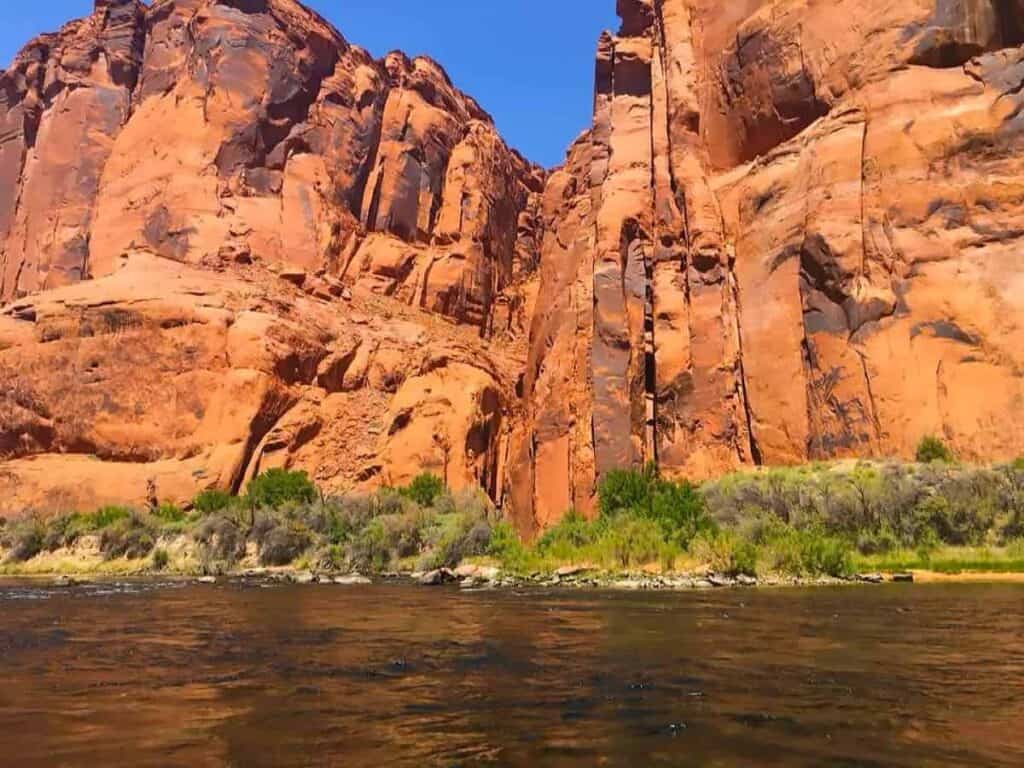
We loved how peaceful and scenic this float was. It’s calm enough for all ages (yes, kids too!). If you are lucky, you’ll likely see wildlife, ancient petroglyphs, and maybe even catch a cool breeze off the canyon walls. The raft guides share marvellous stories along with geological facts that bring this whole place to life.
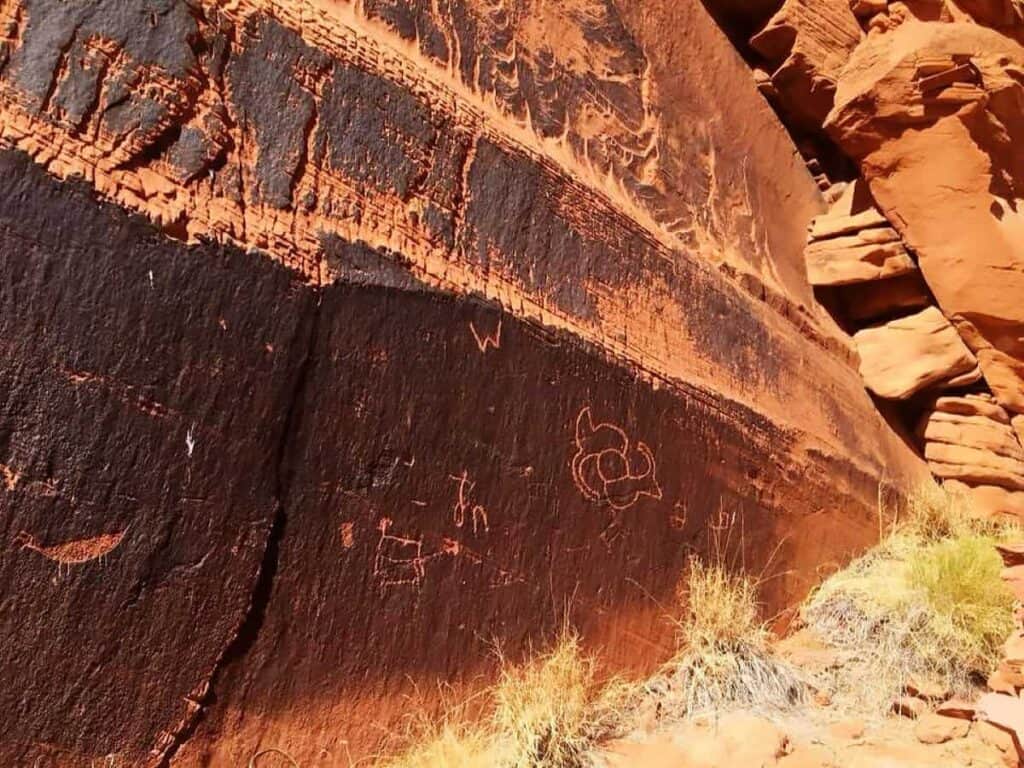
If you’re short on time, many outfitters offer half-day trips that still pack in the magic. You don’t even have to paddle—just sit back, relax, and float.
PRO Tip: Tours usually start in Page with a shuttle to the river launch site at the base of Glen Canyon Dam. Bring water, sun protection, and your camera—you’ll want to remember this float!
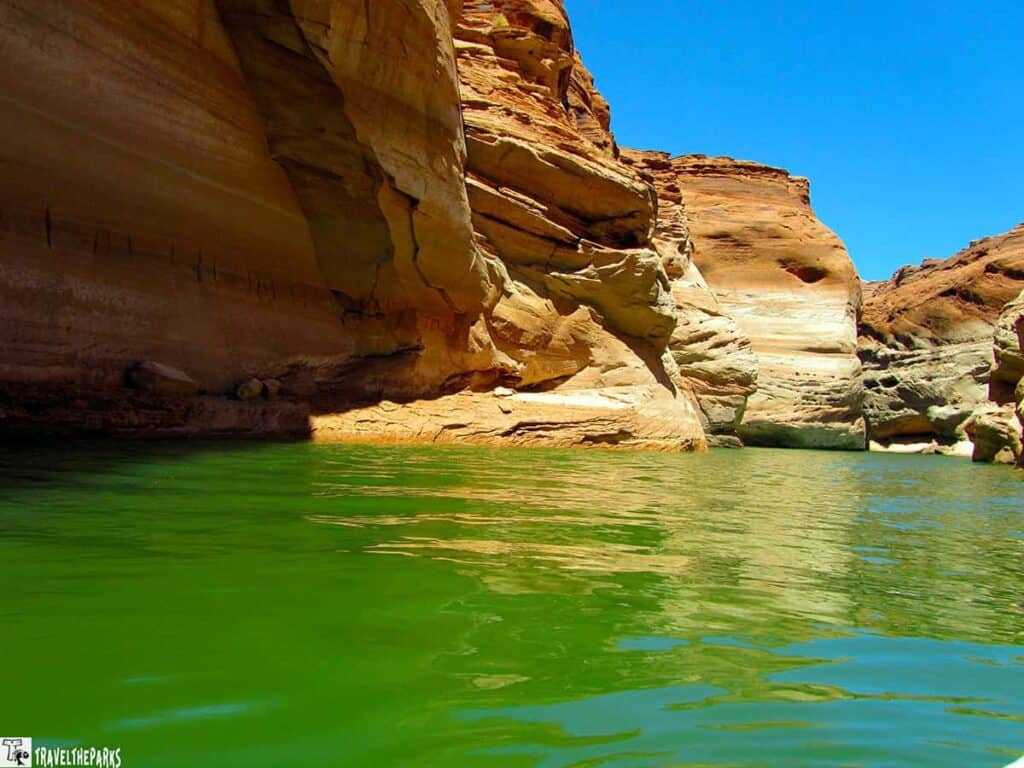
Things to Do in Glen Canyon National Recreation Area: Hiking Trails
If you have ample time in your schedule, I highly recommend getting out on the trails. It will expand your exploration of Glen Canyon National Recreation Area. We only had a small amount of time, but found the Hanging Gardens Trail to be one of our favorites.
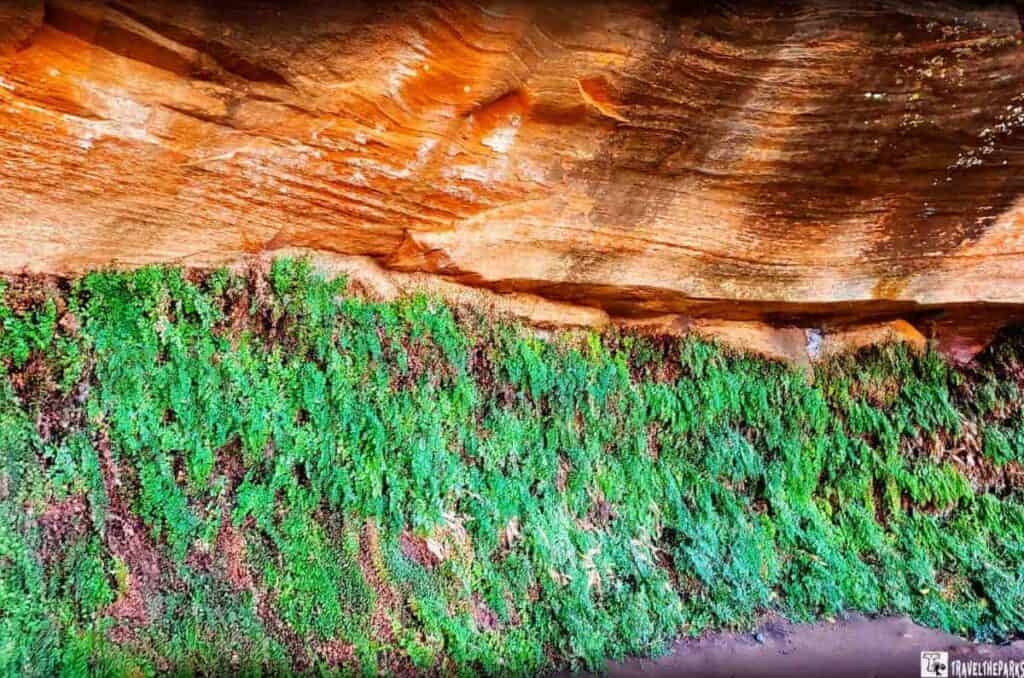
We walk along a rock-lined path (1.4-miles RT) that eventually takes you into a cool shaded alcove away from the sun. As we walked along the smooth sloping rock, we could see water coming out of the sandstone. A vertical curtain of maidenhair ferns and other desert plants flourishes thanks to the spring water. Precariously, they all held onto the cliff. Halfway along the trail, we came across a small spring that collected in a rocky area before disappearing underground. Here, we spotted a collared lizard. When you step back onto the slickrock, take a moment to enjoy the distant views of Lake Powell’s blue waters surrounded by tall red sandstone cliffs. It is surprisingly beauty.
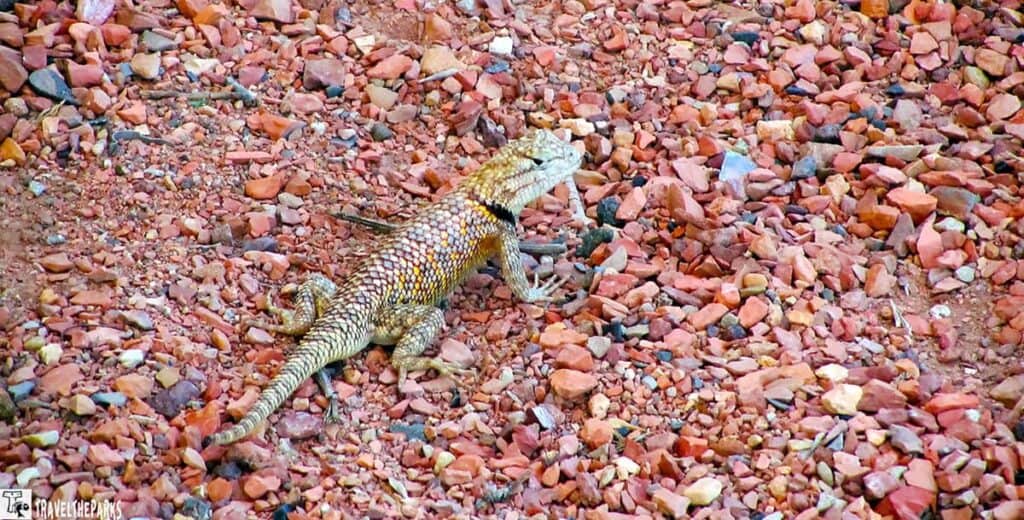
Final Thoughts: Visiting Glen Canyon National Recreational Area in Page, Arizona
Exploring Glen Canyon National Recreation Area in Page, Arizona, was definitely a standout moment of our trip. We enjoyed visiting the amazing Glen Canyon Dam, admiring the beautiful sights of Lake Powell and being amazed by the natural beauty of Horseshoe Bend. During our time there, we also went bass fishing in the calm waters of Lake Powell. It was a relaxing and enjoyable experience that made our adventure even better. We’re thrilled to keep going on our road trip to our next stop—Monument Valley—where amazing sights and unforgettable adventures are waiting for us.
We’d love to hear about your own adventures or tips—feel free to share your thoughts and experiences in the comments below!

